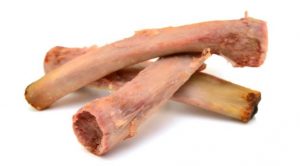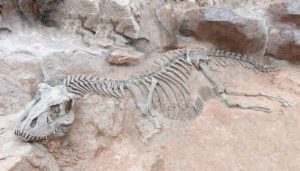[ad_1]
Bones are incredible! Across history, they’ve been used in many ways. They hold secrets from the past and help us shape the future. Archaeologists dig up bones and discover ancient stories. These bones tell us about old civilizations, their customs, and how they lived and died. Cool, right? But bones aren’t only for history.
Scientists use them to make important tools and help us stay healthy. These tools, in turn, support our bodies and help doctors heal us. Plus, by studying animal bones and other old stuff, we learn about what people and animals ate long ago and how they lived together. And there have been plenty more uses for bones throughout time. Some you might have never even thought of!
In this list, we’ll take a long look at ten very (very, very) unexpected historical uses of human and animal bones. Some of these ingenious ideas may shock you. But they are all well-documented through eons of human life on this planet! So the next time you find a bone, remember it’s more than meets the eye. It can be a worthwhile and very non-traditional tool to help mankind too.
Related: 10 Forbidden And Creepy Claims Of Giant Human Skeletons
10 Tupperware

In the early 2000s, construction workers in Israel stumbled upon a significant discovery: a massive stone cave known as Qesem Cave. Since then, archaeologists have been uncovering secrets within its depths that challenge our understanding of human origins and evolution.
In a groundbreaking 2019 study conducted by researchers from Tel Aviv University, evidence has emerged suggesting that prehistoric humans living in Qesem Cave around 400,000 years ago had a unique method of preserving food. These early humans wrapped fragments of deer bones with the animal’s skin to store the marrow inside. This finding sheds light on their sophisticated intelligence and resourcefulness. And it effectively means ancient man was using Tupperware in their own way.
According to the study, this discovery overturns the previous assumption that these early humans were solely hunter-gatherers reliant on immediate food availability. The preservation technique allowed them to store marrow for extended periods—up to two months—and ensured a more stable food supply.
Previously, no evidence of such preservation methods had been found. That left experts to believe that early humans had to endure periods of food scarcity. But it turns out they were preserving food in their own way. The carcasses of fallow deer, which was their primary prey, were brought back to the cave, where the meat and fat were stripped away. That left the bones suitable for marrow storage, and the rest is (literal) history.
The remarkable ingenuity of these ancient humans, showcased by their innovative food preservation methods, challenges our perception of their capabilities and highlights the complexity of their existence. The discoveries from Qesem Cave continue to unravel fascinating aspects of our distant past. Isn’t it wild to think the earliest version of Tupperware is thousands of years old?[1]
9 Medicine

Over the past few hundred years in China, ancient “dragon bones” were unearthed and utilized as a form of medicine. That was before their true identity was known. In reality, these “dragon bones” were fossils from million-year-old dinosaurs. But villagers in rural areas had no idea these bones would have archaeological value. Instead, they believed these remarkable remnants had special healing properties. So they would grind the bones down and consume them for various ailments.
The locals turned to these mysterious bones to alleviate conditions such as dizziness, leg cramps, dysentery, internal swelling, and even malaria. For centuries, villages in remote Chinese outposts swore that these bones were medically special. And since they had no idea the fossils were of literal dinosaurs, calling them “dragon bones” was pretty much the next best thing.
However, while this medicinal practice proved beneficial to the people seeking relief, it inadvertently caused harm to later scientific understanding. The destructive grinding and consumption of these fossils posed a significant challenge for paleontologists. But it’s not all bad.
Today, despite this setback, the local population’s familiarity with the location of fossil troves has proved invaluable for excavation and scientific study. Even though many dinosaur bones were lost over time, many more were uncovered thanks to these peoples’ historical knowledge of the area and its bone-related rituals.[2]
8 Buttons

Bone-made objects resembling modern buttons have been discovered at archaeological sites dating back to 2000 BC. However, ancient buttons across the eras were not used as fasteners like today’s buttons. In medieval Paris, during the 13th century, button-making guilds specialized in crafting buttons from materials such as bone and wood. Old buttons were both functional and decorative. They adorned garments, and yes, some helped to keep them secure.
Distinguishing antique bone buttons from modern ones is possible due to their distinct characteristics. Antique buttons are heavier, have a dry texture, and vary in size. This is because they were typically made from cattle shinbones. Makers used the strength and durability of bone as a material but lacked the exactness to make them the same every time.
Nowadays, buttons are made from various materials, including plastics, metals, and natural resources. These changes reflect advancements in manufacturing techniques and the availability of diverse materials. And, of course, modern buttons have a more utilitarian use than many of the ancient ones. Still, centuries-old buttons were created out of bone—something we can’t say about the modern version![3]
7 Weapons
In the wild, bones can serve as weapons. By fashioning knives from shattered deer leg bones, one can create a tool suitable for piercing tasks. The applications of such knives are limited to puncturing. But there is a long history of bones being used as weapons. In fact, even more than any other use on this list, this is the way bones were most commonly employed by human hands for ages.
Long ago, the Clovis people in prehistoric North America crafted pointed projectiles from bone or wood. Remarkably, embedded bone projectiles have been discovered in the rib of a male mastodon skeleton. That indicates successful fatal attacks, according to archaeologists, of course. What a shot! Curiously, no signs of bone regrowth were found around the Clovis point. So experts believe the mastodon perished soon after the encounter.
The Clovis people weren’t the only ones to use bone like that, though. The Apaches fashioned clubs from the jawbones of horses, elk, buffaloes, or bears. They often left the teeth intact and even polished them for visual appeal.
There have been other historical weapon uses too. The biblical tale of Samson follows the mighty figure akin to Hercules in the Abrahamic religions. In his tale, he reputedly slew a thousand men using the jawbone of a donkey as his weapon of choice. So there is quite a bit of precedent in the power of bones in that regard…[4]
6 Housing
Back in the Upper Paleolithic period in Europe, our early ancestors (including Neanderthals) were pretty clever at making use of what was around them. They took the bones and tusks from wooly mammoths and fashioned them into primitive homes, shelters, and windbreaks. These bones were tied together or stuck in the ground for support. Amazingly, that simple method resulted in sturdy, long-lasting shelters.
In South America, ancient humans also showed their resourcefulness. They repurposed the shells of Glyptodons, which were like giant armadillos, for protection and shelter. Like European Neanderthals, they had an impressive ability to adapt to the environment and make the most of the resources available to them.
All in all, the fact that Neanderthals and early humans used mammoth bones and Glyptodon shells for shelter tells us a lot about their resourcefulness and adaptability. It gives us insight into their capabilities and technological achievements. And it gave them a safe, reasonably secure shelter compared to what else was available at the time. Honestly, that explicit benefit was far more important for their survival—and our current existence—than any archaeological insight we may gain now![5]
5 Delicacies
Throughout the culinary histories of places like India, Iran, and Hungary, an extraordinary secret lies hidden within the depths of bones. The bone marrow! Yes, the same thing that has become a surprisingly common food—and it’s been that way for a long time. Bone marrow, the nutrient-rich center, serves as a tantalizing delicacy that brings bliss to discerning palates.
India celebrates bone marrow as a gastronomic treasure. Slow-cooked curries, known as “Nihari,” are made with succulent pieces of beef or lamb shanks. They showcase the decadence of marrow and stew it up in a concoction of spice and flavor. The marrow’s gelatinous texture imbues the dish with a velvety richness. That then enhances the flavors and leaves diners longing for more.
Across the sprawling deserts of Iran, bone marrow finds its way into the heart of traditional dishes. “Dizi,” a popular stew, boasts tender lamb or beef cooked with marrow, chickpeas, and aromatic spices. Another, “abgoosht,” relies on the marrow’s lusciousness to infuse the stew. In turn, it transforms it into a heavenly delight that melts in the mouth and captivates the senses.
Hungary is renowned for bold flavors, and it, too, embraces bone marrow in traditional cuisine. “Csontos Káposzta” is a beloved dish where marrow-filled bones enhance the intensity of sauerkraut and smoked pork. The marrow’s unctuous nature harmonizes with the tangy sauerkraut, creating a symphony of robust flavors that captivate the taste buds. Yum![6]
4 Farming and Food Processing Tools
People in historical cultures have proven themselves to be really smart and clever time and time again. Some took animal bones, like shoulder blades, and made shovels out of them. In America, for instance, the Cherokee Indians used big animal bones and sticks to create shovels for digging. They tied everything together with leather or deer ligaments. They would cultivate corn and other crops, and inevitably, they needed things to help dig it all up. Figuring that bare hands alone weren’t good enough, they got remarkably creative.
Long before that, other groups also made shovels with animal bones. They used shoulder blades from animals like pigs or deer. They even added antler handles for better digging. These shovels were strong and easy to hold while cultivating for primitive farms. In China, they made shovels from pig or oxen bones. They changed the bones out regularly to ensure the tools remained good for digging. Consider it like sharpening a knife or ax now—just some simple (very ancient) tool maintenance![7]
3 Fertilizer
In the mid-1800s, bone meal emerged as a popular fertilizer. Back then, folks in rural places out on the American frontier gathered buffalo bones for fertilizer. They found that grinding them down and using them within their otherwise difficult soil made it easier to grow things. Thus, bones from dead animals helped sustain critical life on the prairies while Americans were desperate to push west and settle. However, the rise of the cattle industry led to a shift from buffalo bones to cow bones before 1900.
Today, the bone that gets used in current fertilizers mostly comes from ground-up cow skeletons. In some places, the bones of long-dead pigs and sheep also get the job done. It is available in two forms: coarse grind and fine grind. The finer grind releases nutrients into the soil more quickly. Since bone meal is abundant in calcium and phosphorus but lacks nitrogen, gardeners often supplement it with nitrogen-rich manure to achieve a balanced application. But this is one historic bone application that still holds water—er, fertilizer—in the modern era.[8]
2 Divination
In ancient China, people used bones from turtles, oxen, and water buffalo to predict the future. They would clean the bones, make them smooth, and create flat surfaces. Then, they would drill or chisel rows of pits into the bone. Heat was applied until the bone cracked, and the cracks were read to find the answer. “Experts” from that age would then interpret the answer and counsel families and villages. Sadly, the exact method of interpreting the cracks remains unknown. If we knew it today, perhaps we could unlock some secrets about the modern world!
The term “oracle bones” is commonly used to refer to those bones and shells from ancient China. However, the use of shoulder blades to predict the future can be found in other places too. Scapulimancy, as it is called, has been practiced in Japan, Korea, Europe, Africa, and North America. And it crossed over many cultures in many eras, too. Farmers in places like Greece and Serbia down through the years have been found to use scapulimancy. That skill has been employed to figure out lots of things. Uses include determining weather patterns, fortune telling, predicting astrological issues, and more.[9]
1 Musical Instruments
Did you know that bones can be used to make flutes? It’s true! People have been using bird bones, which are naturally hollow, to create flutes for a long time. Archaeologists have uncovered bone flute finds in two millennia-old caves in Germany known to us today as Geissenklösterle and Hohle Fels.
The flute fragments found in Geissenklösterle are estimated to be around 35,000 years old. On the other hand, the Hohle Fels flute is made from the naturally hollow wing bone of a griffon vulture. That one is thought to date back (only!) 4,000 years. Another fascinating discovery was also made recently in the French city of Isturitz. There, ancient flutes made from swan wing bones were found. Those ancient French flutes are believed to be around 30,000 years old.
So it seems that our ancestors were quite resourceful in using bird bones to create musical instruments. The hollow nature of bird bones made them perfect for crafting flutes even way (way, way) back in the day. In turn, it allowed for the production of beautiful sounds that have resonated through thousands of years of human history.[10]
[ad_2]
Source link

